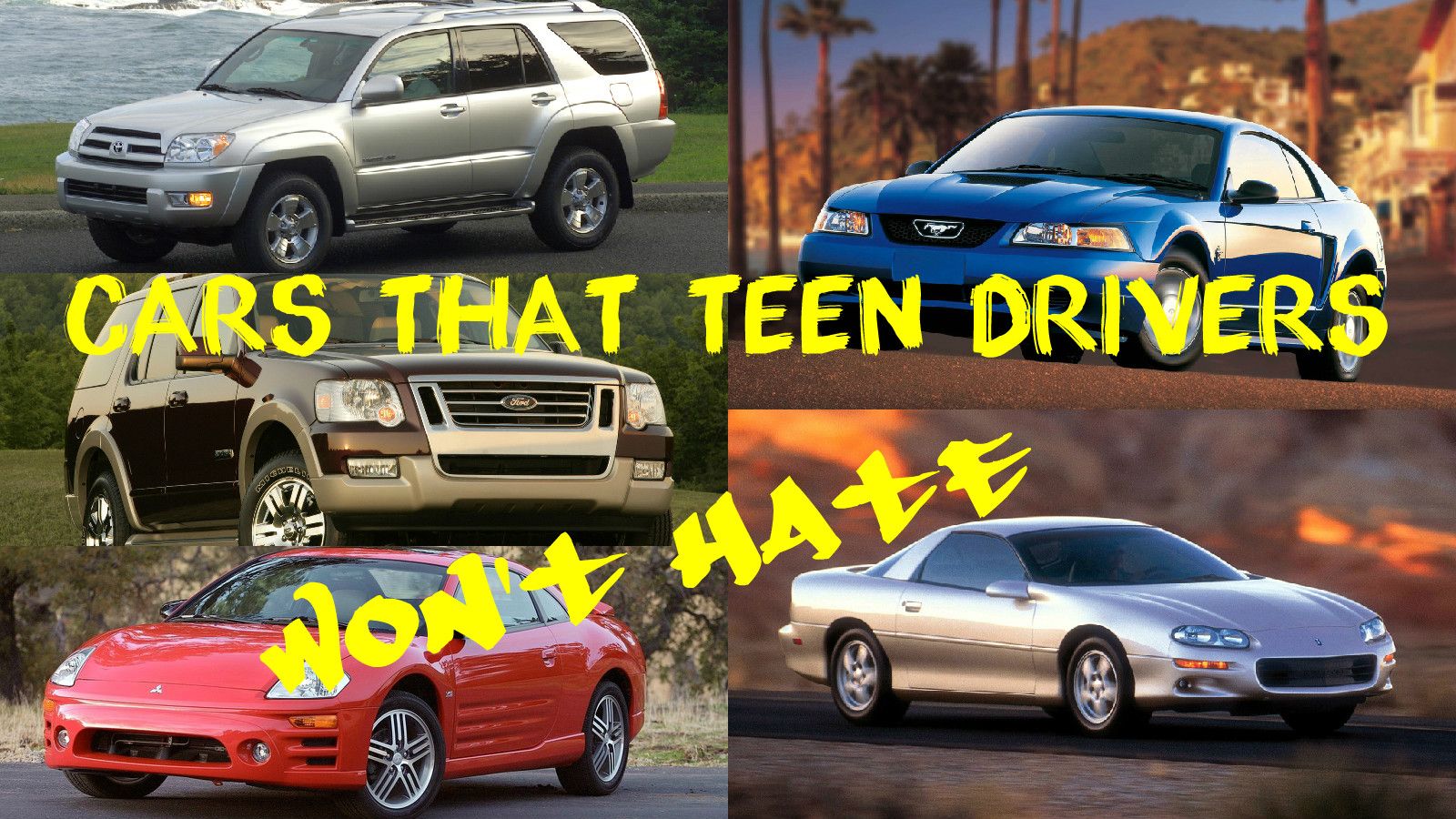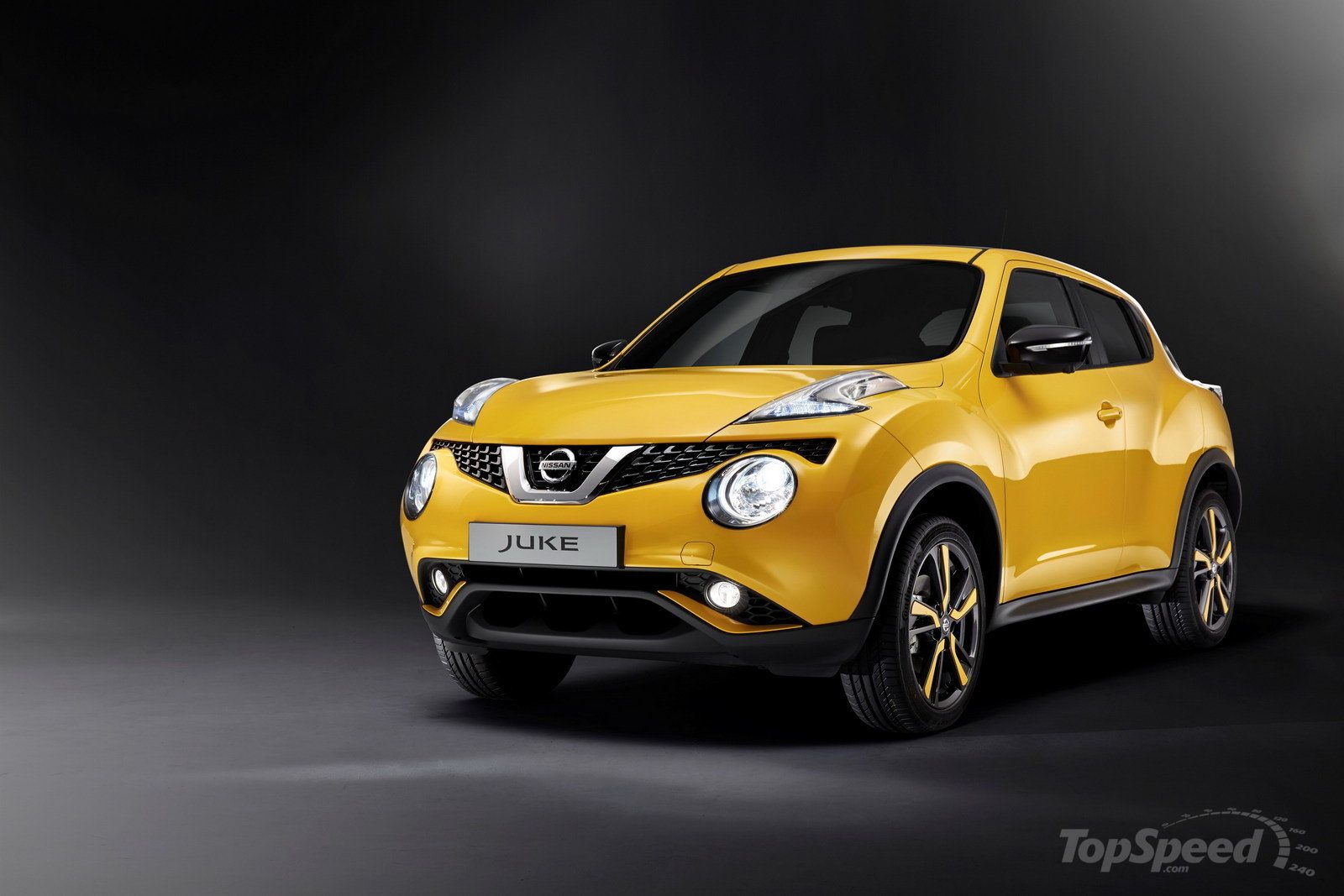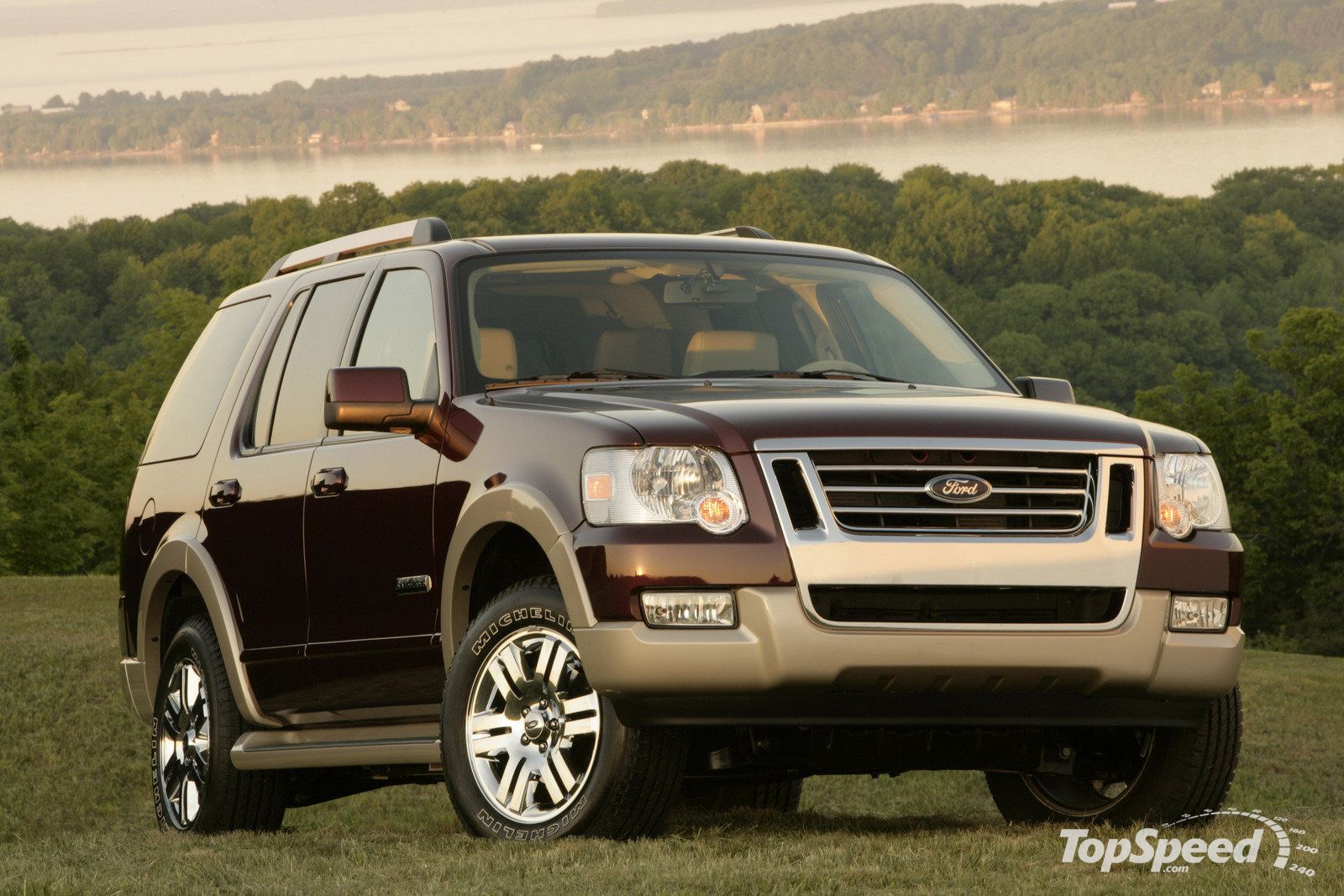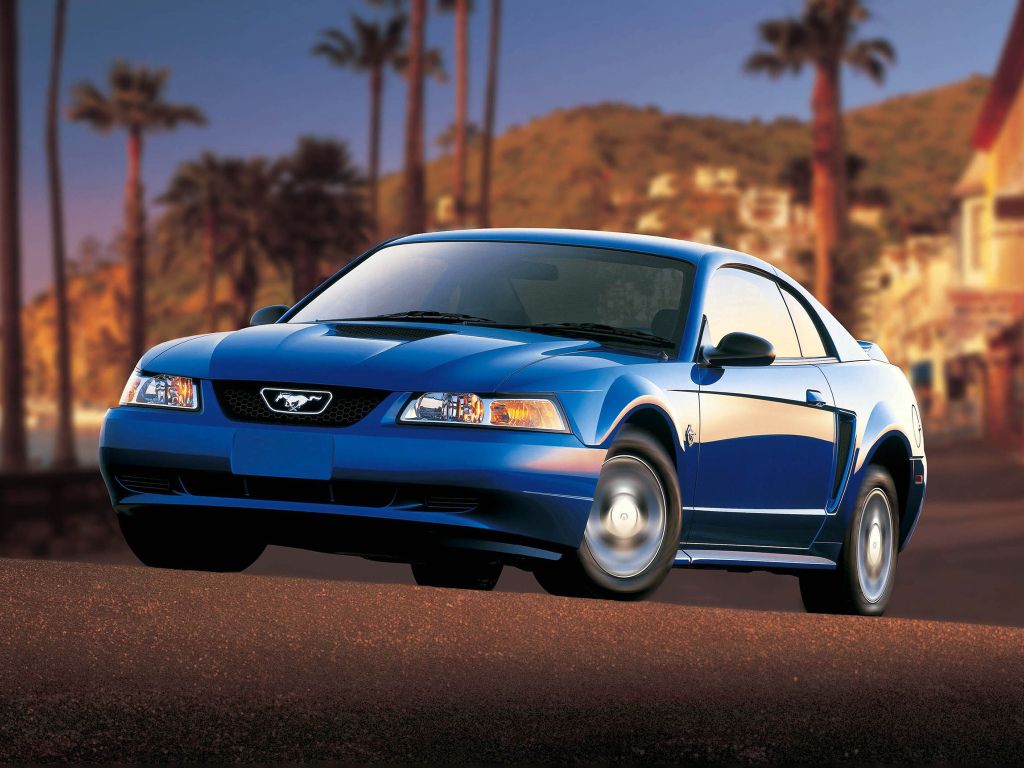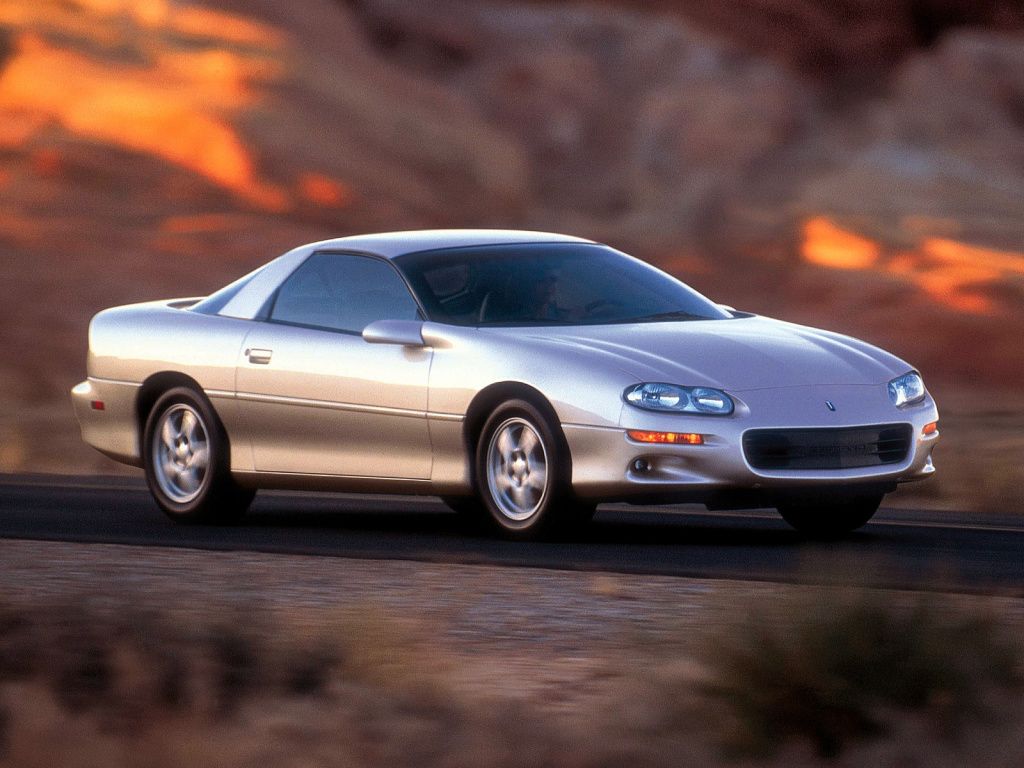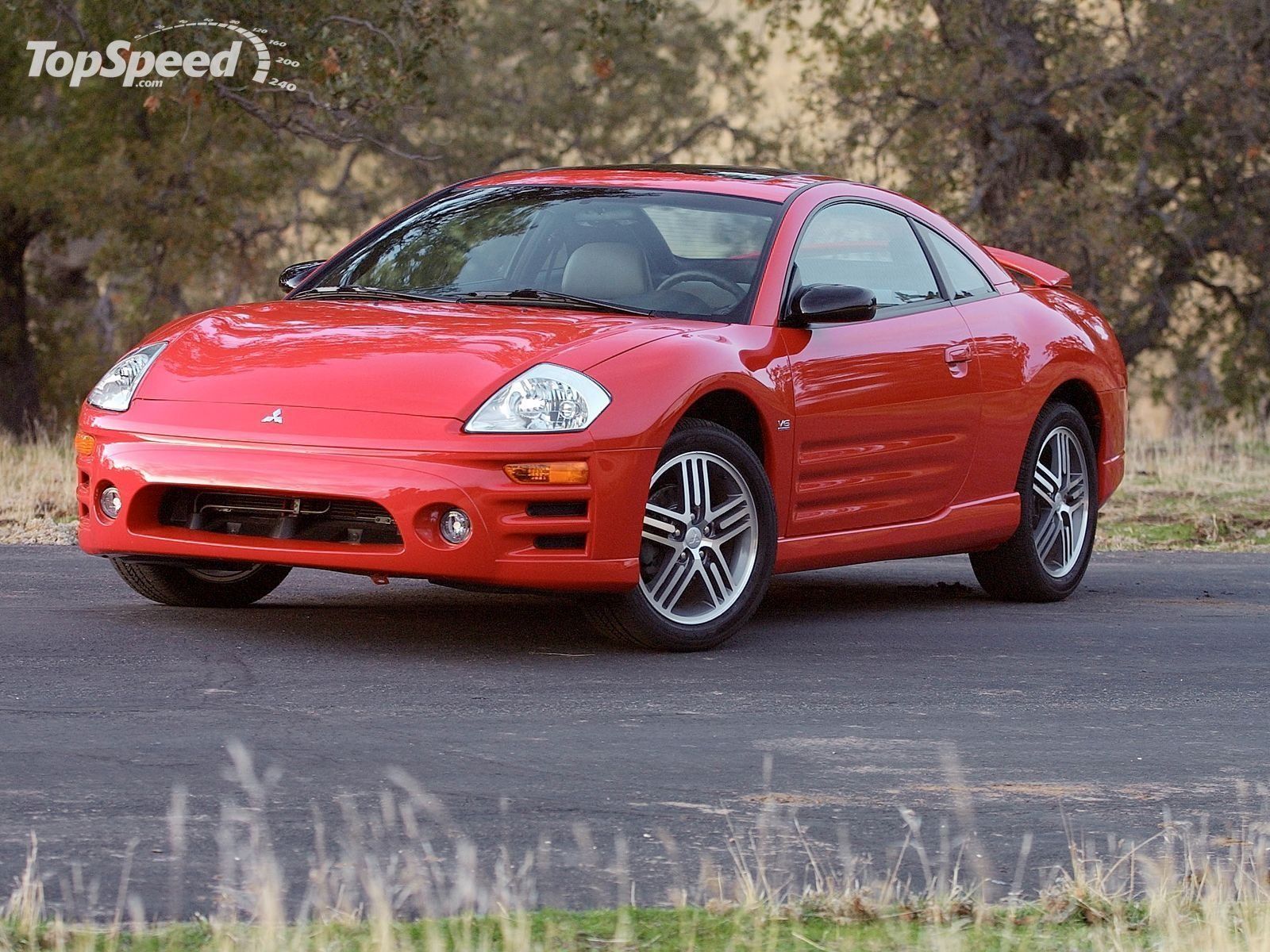For helping to find the best cars for teens, the internet is completely useless. (Um, present company excepted.) Of course, you probably already know that, having likely found this article in your Google search results among similar lists compiled by people who have long forgotten life before mortgages. Oh, yes, Forbes -- do tell how every teen would simply love a 2012 Kia.->ke41 Because that's totally a thing that your average 16-year-old could afford to buy and insure, and it will never wind up hidden in shame at the back of the biggest parking lot available. Yup. Rock on, old people.
But, maybe that's being a little unfair to parents. Fact is, most teens will end up with hand-me-downs anyway, and you want them to have something that's reliable, practical and above all, safe. The sobering reality here is that automobile accidents are by far the No.1 killer of people 15 to 19 years old. Forget suicide, murder, poisoning and drugs like The Reefer -- car accidents typically kill more teens every year than all of those things combined.
So, there's a fine balance to strike here. As a parent, you don't want to put your kids in a deathtrap or encourage them to be self-destructive hooligans. But as a teenager, it's pretty much your full-time job to be a self-destructive hooligan. About the only thing both parties can agree on is that they don't want to spend a fortune in buy-in, insurance and gas.
So, here's Topspeed's list of five vehicles that tick everybody's boxes -- or at least make for a decent compromise. We're going back 20 years, primarily on the basis that hand-me-downs and buying cheap are primary considerations for most people. But unlike most people, we're also going to take into account style, customization opportunities, how the car fits into the average teen's lifestyle, and (deep breath) even sportiness. In short, all the stuff that goes into picking out a car that teens won't hate.
Continue reading for the full story.
What Not to Buy
Teens have very specific criteria for what's worthy of hatred, and certain kinds of vehicle are guaranteed to elicit at least an eye roll. Before launching into specific recommendations, here are a few general guidelines on vehicles to avoid.
Anything specifically designed to move more than four adults, primarily station wagons,->ke143 vans->ke5158 and minivans. -- Exceptions granted for SUVs.->ke145
"Cute Ute" Crossovers->ke288 -- Exceptions granted for cheerleaders.
Pickup Trucks->ke242 -- Exceptions granted for former Confederate States.
Sub-Compacts->ke4670 -- Exceptions granted for hybrids and electrics as ideological statements, or gas-engine sub-compacts for purposes of irony.
Full-Sized->ke4304 Sedans->ke142 -- Exceptions granted for old cop cars, and anything made before 1992.
Jeeps->ke40 -- Exceptions granted for flat-fender Wranglers->ke425 and XJ Cherokees.->ke4617
Scooters->ke2256 and Anything From Korea -- Exceptions granted for purposes of irony only.
Now, with our field narrowed down a bit, let's get into some specific recommendations.
Almost Any V-6 or V-8 SUV
It almost doesn't matter if you go with a Ford Explorer,->ke342 Chevy Suburban,->ke263 Dodge Durango,->ke1368 Toyota 4Runner,->ke1844 or any other brand you prefer -- an mid- or full-sized SUV offers pretty much an ideal balance of factors from both a parent and teen's perspective.
Safety 8/10 -- SUVs have long been the safest vehicles on the road from a driver and passenger's perspective. Just their mass alone (nevermind structural integrity) helps to minimize the effects of an accident. About the only reason SUVs don't score a full 10/10 here is that they're big, harder to handle, and might be more likely to get into an accident in the hands of an inexperienced driver. That's especially true for roll-overs with older models. Also, you can't dispute the slightly sociopathic notion of putting a 4,500-pound wrecking ball into the hands of someone whose primary experience with automobiles has thus far been in the form of video games.->ke2888 Still, on the whole, if you want to protect the troops, a tank will usually do the job.
Desirability 7/10 -- It depends on the person. Some people don't like SUVs. But strictly on the basis that they are basically the coolest form of station wagon available, you can't write them off. Plus, an SUV can be anything from a low-riding street cruiser to a lifted and swamp-tired off-roader. The customization possibilities for most popular models is practically endless. Why a V-6 or V-8 model? Partly because four-cylinder SUVs that aren't Jeeps are lame; but mostly because sounding good is as important as looking good. On that basis, of course the V-8 is better. But even a V-6 can sound halfway decent at idle and part throttle with the right exhaust. That gives the SUV a little bit of sportiness without actually making it much faster. It also fits in well with teen lifestyles, since teens can take half a dozen friends with them to do things parents would rather not know about.
Cost 6/10 -- Usually cheap to buy, and not terrible to insure if you don't get a luxury model. They are the most expensive to run in terms of fuel, but that might not be too big of a deal if your teen's using it primarily to get to school, work and back. Plus, the fact that it can serve as a taxi for friends means that enterprising teens might recoup some of the fuel costs. Beats taking the bus, anyway. Repair and maintenance can be an issue, depending on how hard a teen thrashes the thing, and how badly thought out the inevitable modifications are. But as a whole, used SUVs are pretty tough, and relatively easy to work on.
Notes: If you're really worried about longer-term costs, get a second- or third-generation Ford Explorer. Every high school auto student knows how to work on them, and parts are practically rolling out of every junkyard on earth. But whatever you do, don't buy a pickup truck. They might seem like reasonable alternatives to SUVs, but trucks (relatively speaking) fail on every parent-approved criteria. Plus, those open beds inevitably wind up filled with other people's kids.
1995 to 2009 V-6 Ford Mustang/->ke428Chevy Camaro->ke248
Wait -- WHAT? A Mustang? A freaking Camaro? Are you trying to kill my kids?
Hold on...just hear me out here.
For those who aren't familiar with older V-6 ponycars: They look really fast, but they're hilariously slow. Sorry six-banger fans, but that's the truth and you know it. These cars are the ultimate posers. But on the plus side, they still are what they are, and can sound pretty good idling around parking lots. And it's real hard to feel bad about life when you can wake up every day and say the words "my Mustang."
That's no small thing, either. Not to dip too dark about it, but let's be real here: Suicide and drug overdoses are the second- and third-highest causes of death among teens behind traffic accidents. The right car can be the best friend that keeps a teen going on his/her worst days. In fact, "Camaro" literally means "friend" in French. There's something to be said for that. Just ask Dr. Richard.
It's also worth mentioning: There's a reason I stopped at 2009. Older V-6 Mustangs and Camaros were complete posers -- but the new ones are legitimately fast. Ford->ke31 and Chevy's->ke199 latest generation of V-6 engines are stellar, and a base 2011 six-banger Mustang will easily run with a V-8 GT of 10 years earlier. Same for a new V-6 Camaro and a 2000 Camaro SS. They're nose-to-nose quick. So, stay under 2009 if you care about not encouraging displays of stupidity.
Safety 6/10 -- You might think that this is where ponycars would score the lowest, but Camaros and Mustangs really aren't bad in most crash-test metrics. They're no Suburbans, but they can take at least as much punishment as most other cars of the same model year. Camaros usually a bit more than Mustangs, owing to the the fact that they're a little bigger and have larger crumple zones. While it is true that sports cars as a general rule encourage dangerous displays of immaturity, a slow "sports car" that handles and brakes like a faster one can tip those scales the other way. In addition, it's axiomatic that a person who takes pride in his ride will usually be more careful with it. The same teen who will check six times before pulling out of a parking space in her own polished Mustang will whip a crappy 2001 Kia Sephia out like it's made of marshmallows.
Desirability 8/10 -- Again, this is a purely subjective thing, and tastes will vary. But as cars under consideration for teens go, Mustangs and Camaros have to rank pretty high. Even V-6 models are cool in their own right, since 90 percent of teenagers can't tell a six-banger from a V-8 to look at it. Or they don't care. Obviously, customization and modification potential for these cars is through the roof -- and dreams of a future V-8 swap can motivate a teen to go out and make the money to make it happen. Growing up is supposed to be about learning things that will help later in life -- and a good work ethic is definitely one of them. Speaking from experience here: I got my first job at 14 years old specifically to repaint my 1980 Buick->ke17 Turbo Sport Coupe in Grand National black. And that was before I was even old enough to (legally) drive the thing. Haven't been unemployed since.
Cost 7/10 -- While the buy-in costs for some of the newer cars might be up there a bit, for the most part older V-6 models are dirt cheap. They're also surprisingly cheap to insure. That's a little more true for Mustangs than Camaros, since Camaros are more dedicated sport coupes,->ke141 and Mustangs are mass-market cars sold to secretaries and boy racers alike. Many insurance companies will treat a V-6 Mustang little different from a V-6 Taurus.->ke2299 It's not like they're any faster. Cars like this can end up money pits in terms of customization and modification, but that's part of the fun (and lessons) of owning them. And again, it encourages kids to go out and make the money to build their way to gearhead glory. In terms of fuel economy, older Camaros can get surprisingly good gas mileage. Mid-30s are common, and high-30s aren't unheard of. Used Mustangs usually get a little worse mileage on the highway, but better in the city.
Note to Parents: Selection of Camaros is obviously much more limited than Mustangs, since they were out of production for about a decade, and you might want to stay away from the fast, new V-6 models. But, if you've got money and you simply must get your kid the new hotness, there are ways to slow these things down and cut some power with an "economy" computer tune. You can always turn up the wick later when your kids learn how not to kill themselves, or at least aren't trying so hard.
S14 Nissan 240SX,->ke4965 2nd Gen Subaru Impreza->ke1319 or Mitsubishi Eclipse->ke251
What's your flavor: front-, rear- or all-wheel drive? American muscle isn't for everybody, even when it's only muscular-looking. This trio of Japanese compacts->ke140 are classics in their own way, still fairly easy to find, and offer almost all the benefits of a V-6 ponycar in a smaller package.
Like the Camaro and Mustang, all three of these cars have legendary high-performance variations. The 240SX is related to the Japanese SR20 Silvia, which is often called "the Mustang of Japan." Subaru->ke86 has the Impreza-based WRX Sti,->ke4657 and Mitsubishi's got serious street cred with its turbocharged/AWD Evo monsters.
But, with the possible exception of the Subaru, base-model cars in these ranges are fantastic posers. Like a V-6 Mustang, base Eclipses and the 240SX have all the cachet of their legendary brethren, but very little outright performance, a much lower price tag and far lower insurance costs.
Safety 4/10 -- To make a generalization, relative to the other vehicles listed here, these three cars are almost certainly the least safe so far. That's mostly just a matter of their being compact cars, which have a tendency of getting somewhat more compacted in an accident. Dynamically, the reason I gave all three of these in the same section is that they do offer a choice of drivetrain options for different situations. The front-drive Mitsubishi RS and GS offers predictable handling, and stability in inclement weather. The same is true of the AWD Subaru, but twice over. The rear-drive 240SX, while less stable in bad weather, is very nimble and forgiving of mistakes otherwise. That's what makes it such a darling on the mountain roads of Japan. And it's the only one of the three (barely) capable of doing proper powerslides -- 10 points up for teens, probably 20 down for parents. Still, all three can offer safe, predictable handling under different conditions, and they're nimble enough to both avoid accidents and provide some fun otherwise.
Desirability 8/10 -- If a kid doesn't like Camaros, Mustangs or SUVs, odds are pretty good he's lusted after one of these three imports. The aftermarket is practically endless for all of them, especially where cosmetic upgrades are concerned. And really, isn't that most of what teens care about? Here in 2015, the 1995 to 2000 Nissan->ke62 and 1995 to 1999 Eclipse are well old enough to be classic cars -- at least by teen standards. They've all shown up in Fast and Furious movies, and Subaru continues as a dominant force in rally racing. For Subie, specifically, the 2.5 RS model is a known and much-feared sleeper, but you could make the argument that all boxer-engine, symmetrical AWD Imprezas are potentially legitimate performance cars. Especially off-road. The S14 240SX and second-generation Mitsu and Subie are the most desirable of their lines; they've got the most street cred, and have shown up in more movies, cartoons and video games than any other model years.
Cost 6/10 -- Some of these cars can be a little more costly at buy-in, especially if they're in good condition. People who have good examples are pretty reluctant to sell, for all the reasons given above. If you're the "character building" type of parent, you might opt for a more clapped out example, as an incentive to your kid to work and make the car better. He's going to want to customize and modify it anyway -- trust me. Might be worth it for all involved if you hunt down a mechanically sound car in need of some cosmetic work. It's never too early to learn bodywork, and talented body repair-people are always in demand. It's a good fallback job, anyway. As far as insurance, most American companies regard base model cars as simple compacts. It costs little to no more to insure one of these than it does a same-year Kia. Fuel economy is obviously a high point, assuming teens can keep their feet out of it. Which they won't. Especially if they get a stick shift -- which everybody should.
Notes: If you're going the import route, avoid avoid the third-gen Eclipse or any kind of Mitsubishi Lancer.->ke1122 The 3G Eclipse is a joke and always has been, and Mitsubishi->ke58 ruined the Lancer's street cred. Yes, it is technically related to the Evo,->ke2426 which is great. But nobody's going to believe an American teenager's driving a legit Evo. More messed up than that, the fact is that Mitsubishi spent so long poisoning the well with poser models before importing the Evo that most observers assume real Evos are just body-kitted Lancers. Sad, but true. Just stay away from these models. It's a no-win either way.
(Just for the sake of due process: You could probably say all this same stuff about Honda Civics.->ke236 Objectively, all the same benefits apply. But being as I refuse on principle to ever endorse the purchase of a Civic, they will never under my tenure occupy the same paragraph as other cars previously mentioned. Yes, it's entirely personal bias. So sue me.
Wait. I take that back: Lancer. Civics can share a paragraph with the base model Lancer. But that's as far as it goes. If you simply must buy a Honda compact, at least hold out for an old CRX.)->ke2779
Summary
So, there it is, as we stand. I'll admit, some of these might not be the most original or inspired choices; but popular vehicles get popular for a reason. If you're looking for something a little more oddball, a little more practical or different, our What Not to Buy list should get you pointed in the right direction. But you've probably noticed a few general themes running throghout, and boiled them down to the basic shopping criteria. The ideal teen car should:
1) Be safe without looking safe.
2) Seem impractical without being impractical.
3) Look like a performance vehicle without actually being a performance vehicle.
4) Be the base model of a range that includes at least one serious performance variant.
5) Offer a lot of opportunity for upgrades and customization.
6) Be somewhat common, to reduce maintenance and repair costs.
7) Be adaptable, so teens can make the vehicle whatever they want it to be, and use it in the way it's going to be used.
No promises, but there is a (slim) possibility that, following these recommendations, you might not wind up with a car your teen will absolutely hate.

